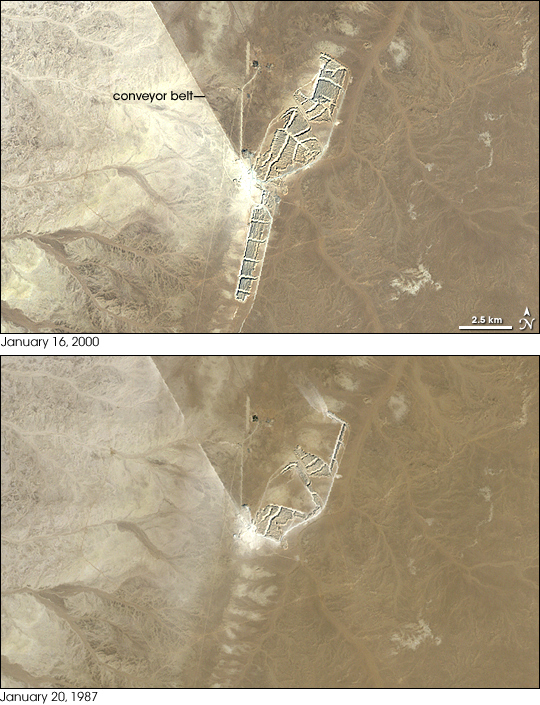Morocco is home to the longest conveyor belt in the world. The mechanical device is used to transport phosphate rocks mined in Bou Craa, one of the largest phosphate mines in the world.
The small town is located in the south-east of the city of Laayoune and is inhabited almost exclusively by employees of Phosboucraa, a subsidiary of phosphates giant OCP.
The Bou Craa belt is a major tool in phosphate mining and production in the region. The winding system of interlinked belts is used to transport phosphate ore from a mining operation in Bou Craa to Laayoune beach, where it can be shipped worldwide, Atlas Obscura wrote.
Instead of trucking the phosphate ore to the coast for a distance of almost 102 kilometers (61-62 miles), the belt does the job.
A belt seen from space
This extra-long conveyance system «carries 2,000 metric tons of rock per hour», NASA wrote in 2018. According to the US agency, this belt has «often attracted astronaut attention in this otherwise almost featureless landscape».
Indeed, on its way to Laayoune, wind blows the lighter particles of white ore off the belt. This creates a «bold ivory streak along the length of the conveyance system», Atlas Obscura wrote. This bold ivory streak can be seen all the way from space, according to NASA satellite images.

In 2000, true-color satellite images by NASA showed the belt from space. «In both images, a conspicuous straight line runs from the center of the mining operations toward the northwest. As of 2008, this conveyor belt system was the world’s longest», NASA wrote.
Phosphate mining in the region started in the 1960's while the Bou Craa phosphate mining operation began growing steadily in 1974. Other satellite images by NASA in 2018 show that the area around the mine has grown significantly in the past five decades.




 chargement...
chargement...












